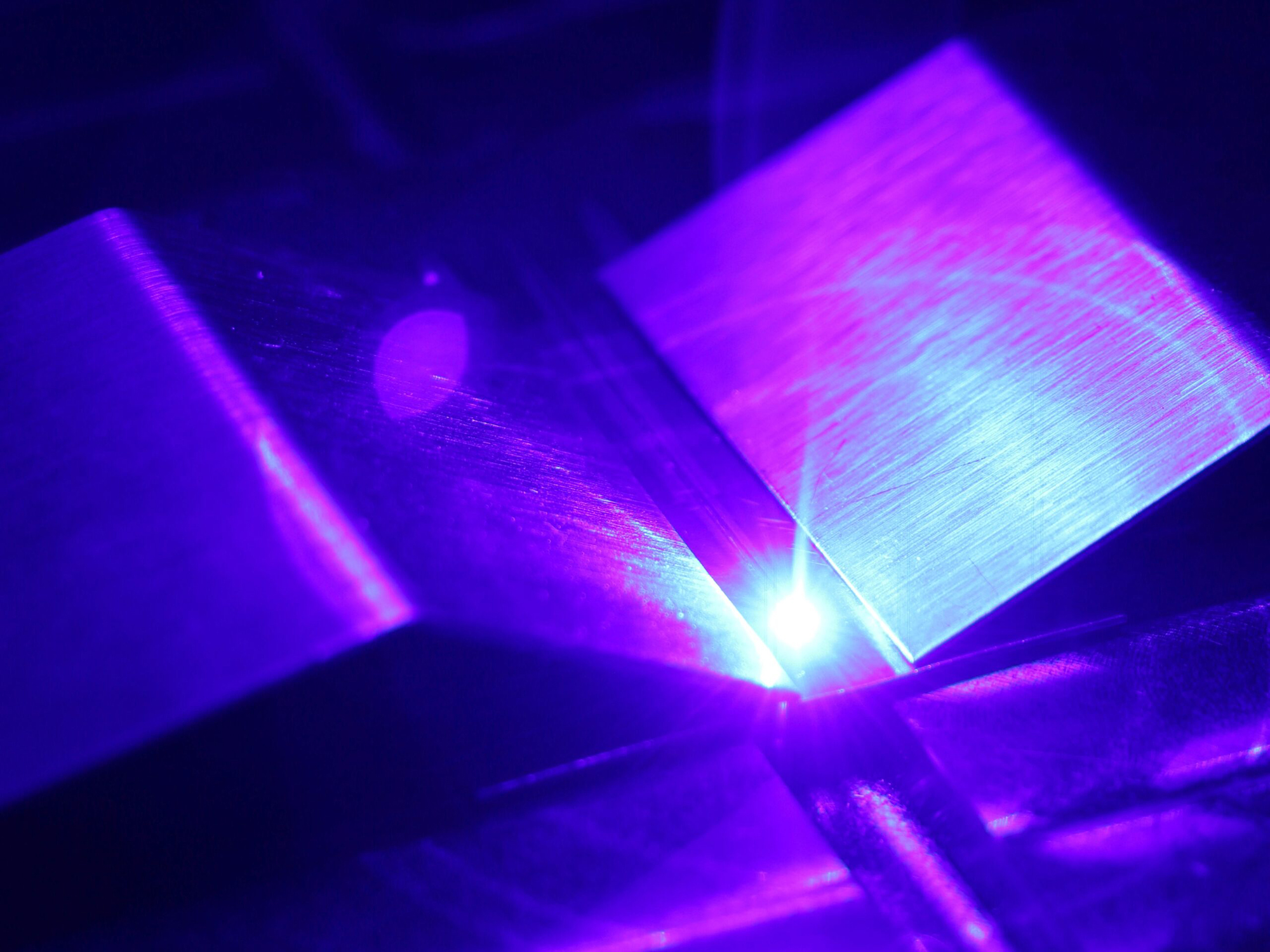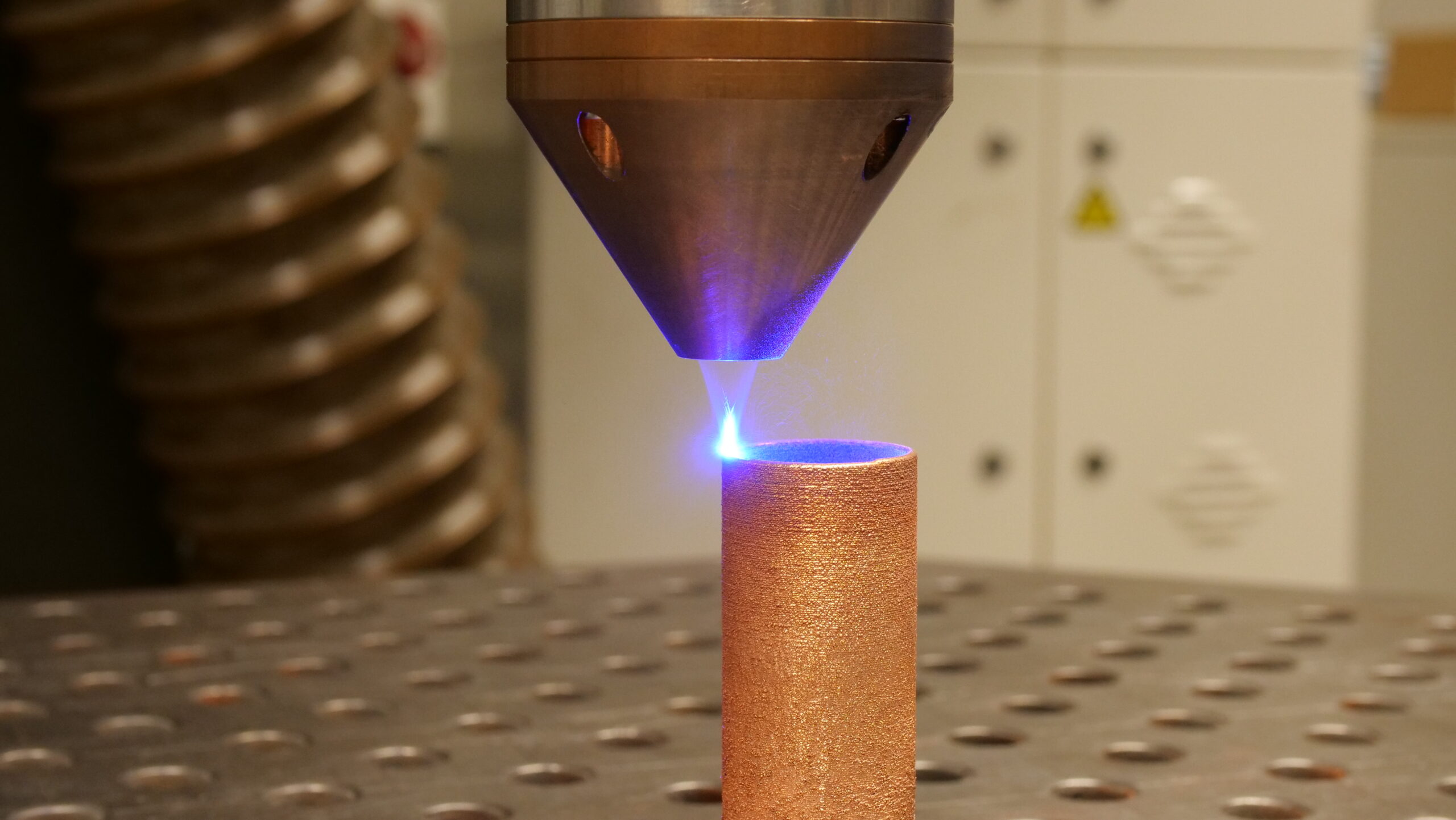
Laserline präsentierte auf der Schweißen & Schneiden ein breites Spektrum seiner Diodenlaser. Im Mittelpunkt stehen dabei neben dem neuen blauen Hochbrillanzlaser für das Schweißen feinster Blechstrukturen auch Lösungen zur Umsetzung nachhaltigerer und effizienterer Bearbeitungsprozesse.
New blue high-brilliance lasers for welding ultra-fine sheet metal structures and solutions for implementing more sustainable and efficient machining processes – these are the focal points of Laserline’s presentation at Schweißen & Schneiden (stand 5A11). The diode laser specialist will also be presenting a wide range of its solution portfolio.
Blue diode lasers for copper welding to cladding
The highlight of the trade fair is the new LDFblue 800-wbc diode laser system, which combines the proven LDF technology with the innovative blade engine from WBC Photonics for the first time. The laser offers an exceptional beam quality of 4 mm-mrad and is available with 400 or 800 watts of output power. Thanks to its high brilliance, the system is ideal for spatter-free welding of sheet metal with thicknesses of 100 to 200 µm while at the same time offering high process stability, to which the robust, IoT-capable system architecture also contributes. An LDMblue 1800-30 with blue scanner optics and copper welding patterns will also be on display at the stand.
Optics for application-optimized beam shaping
The beam shaping optics area is also part of the trade fair presentation. Laserline will be presenting multi-spot optics for flexible adaptation to different joining processes. These enable beam splitting as well as the individual modulation of spot geometry and intensity. This makes them ideal for demanding welding tasks such as the spatter-free realization of symmetrical and asymmetrical seams with an adapted penetration profile.
Laserline will also be presenting special optics for hot-wire aluminum welding. This process offers significantly higher process stability compared to conventional methods, reduces the heat input into the base material and enables excellent seam quality at high process speeds. This will be illustrated, among other things, by the sample of a battery box on display at the stand.
In the area of thick sheet metal welding, an OTS-3 optic and exhibits will also be presented. Due to their adaptability, the modular optics are not only suitable for joining processes, but also for heat treatment, build-up welding and brazing.
Solutions for energy-efficient surface treatment
The trade fair portfolio also includes systems for industrial surface treatment such as heat treatment, paint curing, powder and polymer coatings and cladding. For example, the diode laser specialist will be presenting energy-efficient solutions for the environmentally friendly series coating of brake disks. The focus here is on the 30 kW diode laser, which enables significantly shorter process times thanks to its high performance class.
Particularly noteworthy is the option of double-sided coating, where both sides of the brake disc are processed simultaneously. This leads to more even heating of the workpiece and reduces the risk of deformation.
New APF process fiber for highly focused high-power applications
Interested parties can also find out more about the new Active Process Fiber (APF) at the trade fair stand. The powerful hybrid solution for demanding industrial applications is particularly suitable for processes such as cutting, remote welding, coating and heat treatment, where a very small focus and high laser power are required. With its combination of a high-power diode laser source and two standard beam outputs, the system enables flexible application-specific switching between a standard process fiber and the APF – without the need for additional laser systems. The APF offers high brilliance at output powers of up to 6,000 W and is available with 50 μm and 75 μm fiber core diameters. For applications with higher power requirements, a 1,000 μm standard fiber is available, which enables output powers of over 20 kW. The hybrid configuration offers users a flexible and efficient solution for a wide range of application scenarios – from fine material processing to large-area surface processes.



